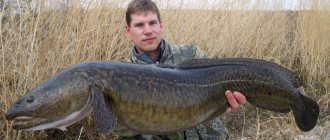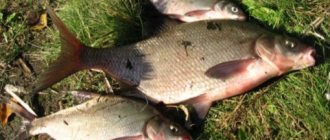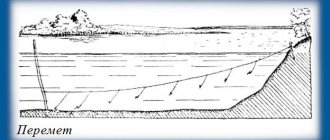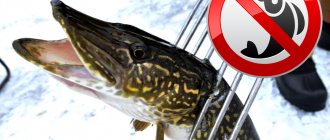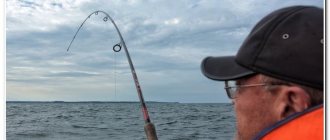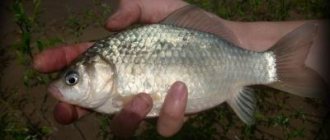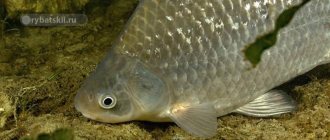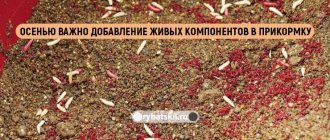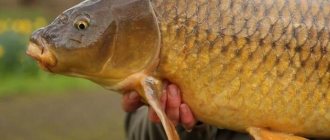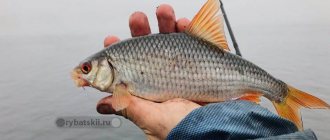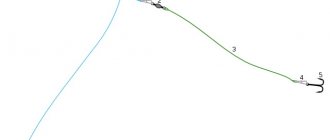No matter how much we feel sorry for summer, the golden season has arrived, and with it changes in the weather, which undoubtedly affects the habits and behavior of the fish, besides, winter follows autumn, and the fish need to prepare for it. Fishing with a feeder in the fall requires us to use different tactics and techniques for catching aquatic life, which is often focused on fishing in cold water, although we will not forget to mention fishing in early autumn, when you can use fishing techniques feeder in summer.
Feeder in autumn fish behavior features
Beginning of autumn (September)
As mentioned earlier, at the beginning of autumn, until the end of Indian summer, the fish behaves in the same way as in the summer. But the summer heat is no longer there, and the nights become cool, so the water temperature drops, as a result of which the fish can be active throughout the day, and not just in the morning and evening hours, when there is no sunshine yet. Promising places for fishing are considered to be unevenness and changes in the bottom, areas on the border of aquatic vegetation, snags, stones and tree trunks, areas with reverse flows, and exits from pits.
Feeder fishing in late autumn (October)
With gradual cooling and a decrease in water temperature below + 15 - +10 ° C, the habits of the fish begin to change. During this period, aquatic vegetation stops growing, as a result of which the water becomes cleaner and more transparent, and insect larvae, crustaceans and mollusks, leave the shallow waters and go to a depth of two to four meters or more. Fish naturally follow their food, so they can no longer be found in shallow bays. Due to the fact that the nights are now quite cold, in shallow spots and ponds, fish can begin to be caught not at dawn, but closer to 10-12 o’clock in the afternoon.
Special attention should be paid to days when the weather is sunny and windless; at this time, fish can come closer to the shore on the shallows to bask in the sun’s rays or rise to a distance of 20-30 cm from the bottom.
In October, white fish begin to eat, but it is not like spring, when they indiscriminately attack everything that catches their eye. Now the fish are behaving more warily, but at the same time, most species are active throughout the entire day, so you should not forget about night fishing. Fishing with a feeder in the fall is effective on medium rivers. As a rule, these are tributaries of large rivers; they are quite deep and have a moderate current. If the river is small, but quite deep, then here you can also count on catching roach, crucian carp, chub or bleak, since these types of fish, with the onset of cold weather, prefer to stay in place and not slide into the lower reaches. When fishing on a river, you should not look for fish in the rapids, they need to gain fat for wintering, and not waste energy and reserves, so pay attention to deep-water places where there is a reverse current or its speed slows down significantly (behind a wide bend or turn rivers, cape).
When you come to a reservoir or a large river, your task is to find a channel or hole, this is where you will have the greatest chance of catching. The most promising area will be a gently sloping area located between two deep-water edges. Also, fish can stand near snags, trees and stones if there is sufficient depth in this place.

In autumn, fish prefer not to gather in mixed schools, as often happens in summer or spring, so before fishing, when choosing equipment and fishing location, it is advisable to focus on a specific type of fish.
Also in this and later periods, the three-point tactic works well. This is when you start fishing with three rods at three different distances. First, find a promising fishing spot at the first point (pit, edge) at a distance of 25-30 m from the shore, then choose the same place but at a distance of 45-55 m and the last point is the farthest 60-70 m or more. Fish and see where the fish activity is maximum, go to that point. Of course, it’s worth considering that the closer the fishing distance, the more accurate your casts and easier the fishing, but in order to cast more or less accurately over a distance of 70 m, you need practice.
When choosing a fishing location, you should also pay attention to the presence of an area where there are differences in depth; it is very good if the bottom in this place is soft, since there may be larvae there.
November
In November, when the water temperature drops to +2-+4 degrees, biting activity decreases significantly. Fish accumulate near wintering pits and may not attack the bait at all. During this period, an active feeder can be effective, when you move along the reservoir and, like a spinning fisher, fish various areas in search of accumulations of fish. It is worth considering that the wintering pit will not always be the deepest point of the reservoir; smaller pits are suitable for these purposes, the main thing is that the difference in depth relative to the rest of the surface of the reservoir is significant.
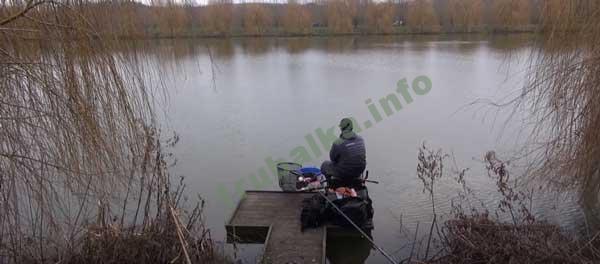
Feeder fishing in the fall does not stop until the winter freeze-up; the main thing is to know where to look for fish.
Groundbaits and lures for bream in November
An important element of fishing with a feeder in late autumn is bait. The performance directly depends on the quality and smell. It is worth understanding that the water in the reservoir is already quite cool, the fish goes to the lower layers of the water, where the temperature is acceptable for it and it will not be possible to lure it aground even with the help of bait.
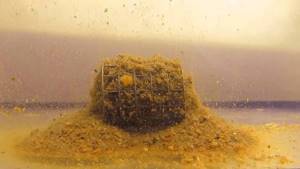
It is necessary to feed in pits, on slopes and edges. In this case, you should pay special attention to what you feed. Many companies now produce quite a variety of ready-made complementary foods for any type of fish. The composition usually contains waste from confectionery and oil production, to which the most common attractants are generously added.
A separate division is the type of bait for cold water, which will work more effectively in such conditions. Betaine is added to their composition, which can stimulate the appetite of ichthyofauna. It is this moment that raises doubts; it is basically impossible to feed a fish to its fullest, it does not watch its figure.
Some experienced fishermen still use these types of feed; bait with dry bloodworms, to which they add betaine, is considered especially effective.
Advice! To prepare bait yourself, use medical betaine with a percentage of at least 90%.
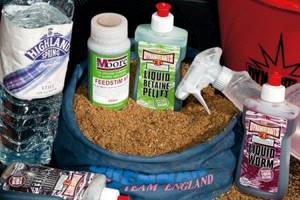
Expert opinion
Alexander Popov
Expert fisherman
You should not use bait with strong odors. In the summer they lured fish, but in the fall they can do just the opposite.
Before leaving for the place, do not be lazy and cook at least an additional kilo of millet or pearl barley. By mixing porridge with bait, you can achieve the necessary slight turbidity in the water and dull the strong odor.
On store shelves, you should pay attention to packages containing bait with dill, thyme, fennel, and coriander. It’s better not to take sweet ones; they are unlikely to work in cold water.
But it is best to use self-prepared mixtures for filling feeders and feeding. According to experienced fishermen, such feeder bait for bream in the fall will work several times more efficiently.
DIY bait recipes for bream
Bait is prepared at home in different ways; each fisherman has his own signature recipe, which was created in the process of complex experiments. The fishermen are in no hurry to give away secrets; the basic recipe looks like this:
- Breadcrumbs are used as a basis; you will need about 1/3 of the total volume.
- The same amount of dry millet cereal will be required.
- You can add rolled oats, take it 1/6 of the total amount or half the norm of millet.
- The cake should be present in equal quantities with the rolled oats, slightly toasted and finely ground.
Advice! All ingredients are prepared at home; you need to mix them right before you start fishing.
Sometimes animal ingredients are added; bait bloodworms or finely chopped worms are good for this. Regular vanillin is used as a flavoring agent.
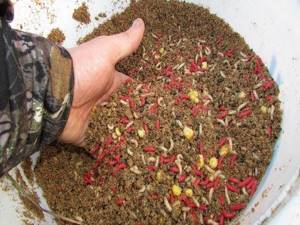
Oil attractants can be used as an additional scent or substitute for vanilla. In late autumn, the smells of spices and natural bait will work well. You can safely add flavors with coriander, dill, anise, thyme, bloodworms, worms, and maggots.
Salapinskaya porridge for bream feeder

There is a basic recipe for bait porridge, which is used not only for bream. It will work no less effectively for catching carp and crucian carp.
Salapinskaya porridge is used more for large individuals; as practice shows, it is large specimens that are attracted to such bait.
Feeder bait made in the fall with your own hands is almost always based on this recipe.
The classic recipe among fishermen is considered basic. Depending on who they plan to catch, they add a variety of attractants and flavorings. The base is prepared from the following ingredients:
- for 1 part pearl barley;
- take two parts of millet;
- two parts medium-ground corn grits;
- two parts of the cell;
- a tablespoon of unrefined oil;
- one packet of vanillin;
- nine parts water.
Prepare porridge according to Salapin’s recipe as follows:
- pour pearl barley into the pan and fill it with water;
- put on fire and cook until half cooked;
- when the pearl barley grains become soft, add millet, sunflower oil and vanillin to the porridge;
- after the water has boiled away, turn off the fire;
- cover the pan and leave for a quarter of an hour;
- while the pearl barley swells, mix barley grits with corn grits;
- after time, all ingredients are mixed;
- leave under the lid to swell and absorb odors.
Salapin porridge for the feeder is ready. The necessary flavorings are added to it, which are suitable specifically for your region or time of year.
In late autumn, bream prefers natural baits; it takes both single baits and combined baits well. The most catchy ones are recognized:
- worm;
- bloodworm;
- maggot;
- Sandwiches made from maggots and bloodworms.
At some points, natural bait may not attract the attention of bream. It has been noted that in the autumn, large individuals respond well to green foam balls; the smell does not play a role.
At the beginning of autumn, bream goes well on large maggots or on a bunch of such bait. As it gets colder, the fish will not look at such baits; they will pay attention to single small baits on the hook.
Bait for feeder fishing in autumn
In September, you can still actively fish, both with plant and animal baits. With the onset of cold weather, fish switch to protein foods. At the same time, various combinations of attachments provide greater efficiency, for example: worm and maggot, semolina and bloodworms, bloodworms, worm and dough. If the bite is weak and changeable, it is better to switch purely to bloodworms. When using animal baits, it is worth remembering that they should not be lethargic and half-dead; fish react much worse to such baits. A bait that plays on the hook is more likely to attract the attention of the fish and force it to take decisive action. When buying bloodworms, it is better to choose dark ones rather than bright red ones, since dark-colored larvae are more tenacious and sit better on the hook.

Remember to experiment and diversify your bait arsenal with amphipods, bark beetle larvae, and various insect larvae that can be found in nuts, apples, or acorns. If you are fishing on the river, be sure to try the caddis larvae; this can give good results when fishing on a feeder in the fall. Some anglers spoke well of fishing with lard soaked in garlic. Avid carp anglers should try fishing with boilies that have a rich protein base.
Recipe for catchy boilies
- Recipe No. 1: a glass of ground hemp or millet seeds, four glasses of fish meal, two glasses of soy flour, one and a half glasses of semolina and eggs necessary to make a normal dough.
- Recipe No. 2: take one and a half glasses of fishmeal, two cornmeal, a glass of soybean, one glass of semolina and half a glass of seeds and salt.
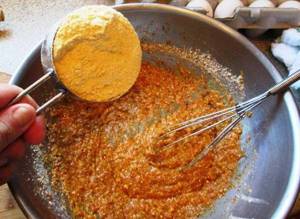
If you still want to try plant baits, then you need to use their favorite treats. Crucian carp can bite on semolina and garlic, roach on pearl barley and boiled wheat, carp on corn grains.
How to prepare a feeder for burbot
The feeder uses a type of removable leash 40 cm long, as well as a main line from 0.2 to 0.3 mm, a lead line of 0.2-0.25 mm. To catch low-blind burbot, the thickness of the fishing line can be neglected; attention should be paid to equipping the feeder with as fleshy and fragrant bait as possible.
Before casting the fishing rod, the feeder is filled with intensely smelling food in the form of offal, pieces of cut fish, and liver from the nearest supermarket. A kind of “sandwich” of sequentially attached particles of liver, fish, and live wriggling worms is attached to the hook as bait. All this is sprayed with a special spray to stimulate the appetite of individuals. The bait moving on the hook attracts the keen attention of a night predator, increasing the likelihood of a successful hunt for it.
Fishing on the feeder in autumn for bream, roach, carp, crucian carp
Bream
On warm September days, except at depth, bream can still be caught on the border of aquatic vegetation, only the bottom here should be muddy. Plant components can be used as bait. The best time for fishing is morning and evening before sunset. With the onset of October cold weather and until the beginning of November, bream begins to migrate through the deep-water sections of the reservoir (channels, pits), at which time it is quite difficult to find it. Therefore, many fishermen feed the near and far points, and it is desirable that the bait for different points be different, for example, the bait that the near one will include ingredients such as millet and maggots, and for the far one, ground peas with chopped worms. In cold water, massive feeding is no longer required, this is also true for other types of fish. The feeder in the fall requires the use of dark-colored bait, so we add soil or clay to it. In November, bream accumulate closer to the wintering pits and do not move far from them, while the bite is very weak (may even be completely absent). During this period, it is necessary to look for areas with a depth of 13-15 m or more.
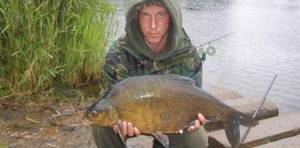
Fishing for roach on a feeder in autumn
In September, the roach's habits are similar to those in summer. We all also use plant and animal baits, and the groundbait is quite nutritious and includes sweet flavors. With the onset of cold weather at the end of October, roaches gather in schools and move closer to the wintering holes; they can also be found in deep riverbed areas. During this period, its fishing is more effective on rivers than in bets and lakes. First of all, you should pay attention to holes that are located in quiet water or in places with reverse flow. The wintering hole should have a clearly defined depth against the background of the rest of the bottom topography, and not be a simple hole 1 m deep; in summer, you can expect to find a flock in such a place. Often the holes we are interested in can be found behind sand spits, shallows or rifts. A sure sign of the presence of trophy roach will be holes or sections of the riverbed in which there are trees and snags fallen into the water. Successful fishing for roach in the fall on a feeder will be in areas where tributaries flow into the main river; as a rule, such places are quite deep.
Carp
Even in the summer, he tries to stay in the pits. With the arrival of autumn, his preferences in this do not change, except that he chooses deeper holes with a soft bottom, where he extracts larvae and mollusks from the ground. At night, the chance of catching carp is quite high. In October, the carp begins to eat; at this time, clear sunny days, when a weak south or east wind blows, are considered the most favorable for fishing. On such days, in the morning it stands at depth, but closer to lunch, when the sun warms the water sufficiently, it may appear in shallow water or rise to the upper layers. Now he still responds well to heavy feeding with nutritious groundbait, an even greater effect if you use bait.

The ideal place for carp fishing is the lower part of the gentle slope to depth. In November, the carp stays near the wintering pits; now the bait should contain more protein elements (worms, maggots, bloodworms), diluted with soil to increase the mass of the bait and create a larger food spot. From plant components you need to take only those that have little nutritional value (breadcrumbs, flour, ground seeds, bran)
Fishing with a feeder for crucian carp in autumn
The bite of crucian carp in the fall is divided into two stages: in the first half of autumn, in many reservoirs its activity may increase due to the end of the summer heat; in the second half (from mid-October) due to the onset of cold weather, it gradually decreases, crucian carp is less common than others fish shows its activity. Before Indian summer, while the weather is still quite warm, it can be found on bays, ponds and rivers in the coastal zone at the edge of aquatic vegetation, in areas where there are gentle depressions in depth and in places rich in folds and unevenness of the bottom. Now it is active around the clock, but fishing is most effective at dawn and 1-2 hours before sunset. With the onset of cold weather (late September-October), it rolls down to a depth of 3-5 m, closer to the pits and riverbed. During this period, fishing for crucian carp on a feeder in the fall will be successful on quiet sunny days, especially if such weather lasts for several days in a row. Now it’s worth switching to baits of animal origin and paying more and more attention to rivers and reservoirs, since at shallow rates its activity is much faster, and at this time it gradually leaves the bays. With the onset of November cold, crucian carp accumulate near wintering pits; it is very difficult to catch it on the eve of winter cold because, unlike the same roach, it ceases to be caught in most reservoirs.
In late autumn, before choosing a body of water, you need to ask local fishermen where crucian carp are still active.
Feeder tackle for bream
The success of catching fish largely depends on how you equip your rod.
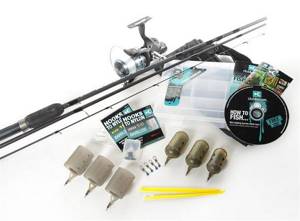
To do this, special attention is paid to:
- rod blank and its type;
- selection of the appropriate coil;
- the formation of equipment, which includes the main fishing line, leashes, hooks, feeder, and accessories should not be forgotten.
Important!
Only correctly selected elements of tackle will help you catch, remove and remove a worthy trophy from the hook. For successful fishing in late autumn, a feeder or donka would be ideal; a picker has proven itself well.
Rod for catching bream in autumn
When choosing a fishing rod, you should take into account the size and depth of the reservoir; the larger and deeper the river, the longer the rod should be and the more powerful the reel and equipment.

The place from which the cast will be made also plays an important role.
For the shore, longer rods are used; for fishing from a boat, a long form is not needed; the fisherman can always swim up and cast to the chosen place.
Fishing for bream in late autumn on the river requires a rod with the following parameters:
- for the shore, a form 3.3–3.6 m long is suitable;
- Fishing from a watercraft is carried out with rods up to three meters;
- the maximum possible casting test should be about 150 grams; for rivers with a small current, 80 g will be enough;
- The tip is usually set to medium soft, this will allow you to see and detect the fish in time even with the slightest bite;
- the structure of the form should be medium or soft;
- the handle can be either cork or Eva-coated; everyone chooses a more convenient and familiar material for themselves.
Advice! When purchasing a fishing rod or setting it up before fishing, pay special attention to the rings and inserts in them. It is important that the inserts have an integral structure; the slightest chip will negatively affect the casting distance and “help” you lose more feeders.
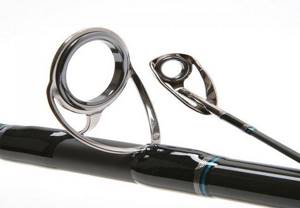
It is preferable to take a carbon rod blank; the material is light, durable, flexible, but not shock-resistant. Therefore, it must be handled with extreme caution; with proper care, such a fishing rod will last for many years, and manufacturers put better fittings on it.
The composite is not as strong and light, but it can easily compete with carbon poles. The fittings here will be of good quality; ceramics are usually used in the rings of such rods. The material will be strong and of high quality for a long time, and will withstand long-term fishing even for large specimens of both river and lake fish.
It is better not to take fiberglass; the cheap version of feeders will not always be a good assistant in fishing on the river. Many fishermen often note the fragility of the rod, heavy weight, and poor-quality fittings among the negative qualities. In addition to burrs on the guide rings, the reel seat also often fails, the nut of which may not hold up at the most crucial moment.
Coil
When forming the feeder equipment, one of the main roles is given to the coil, and this is not done in vain. For feeders, fishermen prefer spinning reels; they are convenient, lightweight, durable and easy to use.
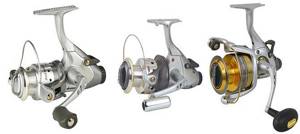
A reel for casting feeders of significant weights is selected from among the power ones, taking into account the size of the spool, its shape, gear ratio, number of bearings, and the presence of a spare spool. For autumn fishing, regardless of where the fishing will be from, with a rod length of up to 3.6 m, you should pay attention to the following products:
- with a spool of 3500–4500, this is the size that will allow you to wind a sufficient amount of fishing line or cord for casting both from the shore and from the boat;
- the cone-shaped shape will allow you to quickly release the line when casting, it will come off faster and easier, while the formation of beards will be minimized;
- it is necessary that the coil has a gear ratio of 5.4:1;
- bearings in the reel ensure its operation, the more there are, the longer the service life of the product, it is important that there is one of them in the line layer;
- give preference to products with a main metal spool, which is supplied with plastic or graphite;
- It is advisable to take a reel with a metal body; you should not be afraid of heavy weight; most manufacturers use high-quality alloys to make it lighter.
Advice! You should not chase a large number of bearings, as long as there are as many as stated by the manufacturer.
Most often, for fishing with feeders, reels with a rear drag are chosen; it is easier to adjust during the period of retrieving the catch. Some people prefer products with a front clutch, but this is the exception rather than the rule.
Particular attention is paid to power reels with a baitrunner; this reel has better characteristics, but its cost will be slightly higher. Such products often come with two metal spools, and in terms of the presence of bearings they are ahead of conventional spinning spools.
Line and leashes for catching bream in autumn
After you have decided on the reel, you need to figure out the fishing lines and cords for both the main and leashes in the formation of the equipment.
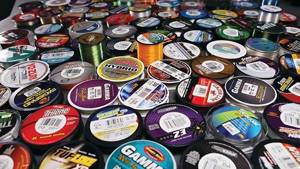
Late autumn makes its own adjustments to the choice of these components. Weather conditions mean that fish in any body of water become more lethargic and, when caught, will offer less resistance than during the summer heat. But great caution will also be exercised, which is what pushes fishermen to use finer components to form gear.
Most often, cords are used to rig the feeder in late autumn, the thickness of which should not be more than 0.14. A good option would be eight cores, 0.12 thick. This thickness will allow you to assemble an inconspicuous and strong tackle for casting feeders with bait of the recommended weight. The small thickness will not be noticeable to the cautious bream; in feeding areas, the fish will be able to come close to the food and grab the offered hooks with bait.
For leashes, it is better to use fluorocarbon or fishing lines with such a coating. They will be invisible in the water column, but they will be strong enough to catch even a trophy specimen in late autumn. For an eight-core 0.12–0.14 cord, a fluor or coated fishing line of the same thickness is suitable for the leash.
Advice! Remember, fluorocarbon and fishing line coated with it have lower breaking load ratings; this must be taken into account when assembling gear.
Which hooks are best for a bream feeder?
Catching “November” bream on a feeder is not as simple as it seems at first glance; hooks play an important role in catching this representative of the ichthyofauna. When choosing them, each fisherman uses all his knowledge about this fish, takes into account the bait used, its quantity and size.
Experienced fishermen prefer hooks from well-known companies, which have been on this market for several years. Their range is amazingly diverse; a self-respecting company produces products for fishing of this type separately for each of the baits used:
- under the worm there are hooks with a long shank, on which notches are often made;
- peas and corn will require smaller ones, with a short shank, but with thick starting material;
- For maggot use hooks with a medium shank, their thickness is also average;
- The bloodworm can live longer and not drain only on a thin hook with a medium shank.
There is also such a thing as a universal hook, but it is not suitable for all baits used.
The most famous manufacturers are Ovner and Gamakhatsu; their products are famous for their diversity, high quality of materials used, and wear resistance. Companies offer many series that contain hooks of the same shape, but of different sizes.
Choosing bait for the autumn feeder
Until the end of Indian summer, we don’t have to worry too much about overfeeding the fish; the exception may be small, shallow ponds, where the fish are initially not accustomed to heavy feeding. Bait for feeder fishing is no different and includes standard plant ingredients aimed at luring fish and keeping them at the fishing point. All kinds of sweet aromas are used as flavorings (banana, strawberry, tutti-frutti, peanuts).
Features of bait for cold water
With the onset of cold weather, our preferences in choosing bait change significantly; the bait becomes inactive (the number of floating particles is minimal). In the summer, when you bought or made bream bait, and your plans changed, and you went for roach, in order to achieve better results, you needed to acquire bait tailored for roach. Now, even with carp bait, roach and bream can be caught with equal success. The main thing is that it is designed for fishing in cold water. Bait for feeder fishing in the fall should not have large ingredients; all its components should be finely ground, so that the fish will eat, but not get enough. Also, the bait should not be nutritious, so it must be diluted with soil or clay, in cases of fishing in the current. The ratio of dry bait to soil is 1:1, that is, for 1 kg of bait 1 kg of soil. In cases of fishing in the current, when we use clay to make the bait more viscous, the ratio will depend on how viscous the bait we need.
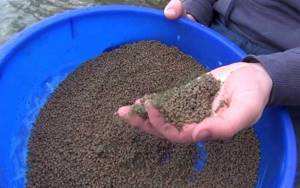
If you put too much clay, you can cement it, and it will lie dead weight in the feeder, rather than being washed out by the current. It is imperative to add protein components to the bait (bloodworms, maggots or chopped worms), they are the ones that will force the fish to stay at your point. Moreover, if you are fishing with maggots, then it is advisable that it be included in the bait. For 1 kg of dry mixture, you need about 100-150 grams of animal feed (depending on your budget and the number of other fishermen near you). With the gradual clearing of the water, the color of the bait will become more relevant; it should blend with the bottom, otherwise the fish against its background will be noticeable to predators and will not take risks and approach it. In most cases, our task is to darken the bait; for these purposes, you can use soil, activated carbon tablets or food coloring. It is worth remembering that the colder the weather becomes, the less feeder fishing in the fall will depend on bait, since the fish will roll closer to the wintering pits and will not move away from them at the smell of your bait. Therefore, it is so important to find places where it accumulates in late spring.
Flavors for feeders in autumn
Summer aromas do not work in the fall, preferably the spicy smells of cinnamon, pepper, cloves, and you don’t have to buy them specifically in a fishing store. Often fish can become active to shrimp and crab odors.
In order to kill two birds with one stone, you can add fish or meat and bone meal to the bait. This will be both a flavoring agent and a protein supplement that will keep the fish at the fishing point. The ratio of these components in the bait is 10-15% of the volume of the entire bait. You can buy them at any pet store. You can also purchase various dried food for aquarium fish at the pet store and use it as a flavoring agent.
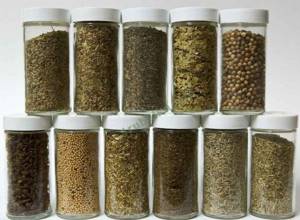
Homemade flavoring
Having mixed the bait, we make a starting feeding of 10-12 throws with feeding troughs. In autumn, the fish may not immediately respond to bait and come up after 1-2 hours. Therefore, it is better to feed first, and only then arrange your place for fishing. We do recasts no more than once every 10 minutes, this is not summer.
Fishing with a feeder in the fall, homemade bait recipes
Recipe 1
- Breadcrumbs 500 grams;
- topcoat 500 grams;
- milk powder 100 grams;
- bloodworm 150 grams;
Recipe 2
- Sunflower cake - 300 grams;
- Boiled millet - 300 grams;
- Rye bran - 300 grams;
- Ground coriander 2-3 teaspoons;
- Bloodworm – 100-150 grams.
Recipe No. 3
- Breadcrumbs - 200 grams;
- Makukha - 200 grams;
- Rye bran – 200 grams;
- Boiled rice - 200 grams;
- Ground coriander – 2 teaspoons;
- Pieces of unsalted lard (5X5 mm) - 100 grams;
- Bloodworm 100 grams.
Choosing equipment for feeder fishing in autumn
The autumn feeder requires us to use thin and sensitive equipment. After all, fish in cold water are less active and do not offer such vigorous resistance as in summer, which means we can use thinner baits and fishing line. In addition, the water brightens in the fall, and the fishing line becomes more noticeable in it, and the fish itself behaves more warily.
Until the end of Indian summer, we can quite successfully fish in shallow bays and ponds with light pickerel gear, where the weight of the feeder or load does not exceed 20-25 grams. Accordingly, the thickness of our fishing line, in most cases, is limited only by the weight of the fish. And we don’t need to take into account the possible critical load when casting equipment with a heavy feeder.
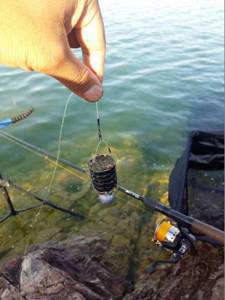
In the fall, we will have to fish at a considerable distance from the shore, often there will still be a current in this place, so we will need more powerful forms of the Medium, Heavy and Extra Heavy classes so that we can throw quite heavy feeders, in some cases their weight will reach 120 grams. Therefore, you shouldn’t reduce the thickness of the main line too much, otherwise the feeder may be shot during casting. In terms of length, long forms of 3.6-4.2 m are welcome. The colder it is, the further the fish will roll into the holes, which is why on a wide river or reservoir it is more effective to use forms 3.9 m or more in length.
In the fall, it is better to abandon the use of monofilament altogether and switch to braided cord, since it has greater sensitivity, which is important in conditions of reduced fish activity.
For the longest casts, you need to use a bullet feeder; it has the best aerodynamic characteristics. When fishing in the current, metal cage feeders work well (they are triangular, square and cylindrical in shape, with a flat base). If feeder fishing in the fall takes place on a reservoir with a silt-covered bottom, then to prevent the feeder from getting too buried in it, use plastic feeders with ears; the ears create an additional plane.
As for installing the equipment, you need to forget about the anti-twist tube; with it, even in the summer, the sensitivity was not special, and now even more so.

Best time to catch burbot
This species is considered one of the few fish from the cod family that live in our reservoirs. Codfish originate from northern rivers flowing into the waters of the Arctic Ocean, and burbot has corresponding characteristics of habit and behavior.
The cold season is simply ideal for burbot. When the ground is already covered with snow and the rivers are not frozen, the most fabulous period begins, the pre-spawning feast of this predator. Burbot begins to spawn after the ice has formed. During the spawning process, the predator does not consume food.
The quality of the fish bite depends on the weather. In unstable weather at the beginning of autumn, burbot begins to be caught on the feeder. Mostly, these accidental captures occur during breaks in the weather - on stormy days with sudden drops in temperature and atmospheric pressure.

The closer the season is to winter, the more intense the bite becomes. But you can count on a good catch using a feeder rig only when the water temperature in the river drops below 10 degrees Celsius. For the middle zone this is at the end of October or beginning of November.
10-15 days before freeze-up, the fish begin their pre-spawning feast. At the same time, inexperienced fishermen are given the false impression that burbot is easy to catch on a feeder in the fall. This is not entirely true, although there is no difficulty in catching this fish. It's hard to find her.
Therefore, it is worth first studying the fishing tackle for November fishing for burbot, and then thinking about ways to catch it on a feeder. Fishing is carried out with an ordinary donka. It is the simplest equipment for autumn burbot fishing. Another option is the so-called feeder.
A blind bottom is a rigid rod with a main line 4-5 m long and 0.3-0.4 mm thick. The length of the fishing line is equal to the length of the rod. In addition, the tackle includes a sinker with a loop, attached to the loop at the end of the main line, and a leash with a length of 25 cm to 50 cm and a thickness of 0.2-0.3 mm. with hook No. 8−10 and long shank.
Read: Catching burbot on a donk
But in practice, the gear is even more simplified. The fishing line has a thickness of 0.25-0.3 mm, the leash has the same parameters, the hook is used No. 10-12 with a long neck. The sinker has any shape, with weight proportional to the flow. Typically, a load weighing 40−100 g is used.
There are various options for this equipment. The use of a reel is allowed, but it is of no use to the angler. It is possible to use Bolognese and feeder rods for autumn burbot fishing, descriptions of which are posted on numerous videos.
At the same time, the essence of the gear does not change. Donka is a donka. Fishing is carried out with sports fishing rods, feeders, Bolognese fishing rods and for them these properties correspond.
In fact, the given figures are considered conditional; to replace the fishing line, it is allowed to use both rope and nylon cord. A nut or stone is effectively used as a sinker. This will not change the bite. Regardless of the quality and design of the gear, it can be used for fishing.
